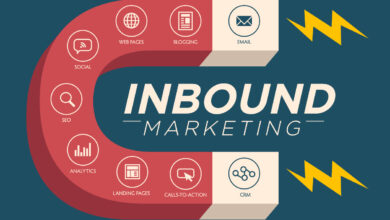How IoT Devices Can Improve Your Business Office

The Internet of Things, or IoT, is a developing infrastructure of internet-connected things ranging from vacuum cleaners to light bulbs, all of which are designed to improve control, automation, and even data collection. When implemented properly, the Internet of Things may be a significant asset to a corporate office. Are you looking for inspiration? Consider the following.
1. Utilize IoT printers to track maintenance
While many organizations are now accustomed to network-connected printers, a new generation of intelligent alternatives is emerging that offer more than network printing. They keep an eye on their paper and ink supplies and can alert a support person when they run out. Additionally, they can communicate with inventory systems to determine how much spare ink or paper they have on hand and can place orders for additional supplies without human intervention. Never again will you have to wait for a new toner cartridge to be delivered.
2. Using smart bulbs, enable intelligent lighting
Intelligent lighting can be used in a variety of ways to enhance the appearance of a company workplace. Simple smart lights, like as the white Philips Hue, can be programmed to learn user schedules and can be used in place of motion sensors. Multicolored bulbs with greater flexibility, such as those from Sengled or LIFX, can be programmed to modify brightness and color balance throughout the day, thereby reducing eye strain, tension, and discomfort. While the initial investment may be high, these LED bulbs last a long time and frequently come with outstanding warranties.
3. Utilize intelligent assistants to maintain office awareness
While intelligent assistants such as Alexa or Cortana are excellent for personal administration, they lack crucial characteristics necessary for commercial organization. That is why higher-level systems such as Amazon’s Alexa for Business can communicate with an entire office’s worth of IoT devices and deliver everything from weather forecasts to meeting tracking to all sorts of custom settings. It’s as if Tony Stark’s JARVIS were available on demand to handle your workspace.
4. Replace custodians with intelligent vacuum cleaners
Custodial personnel can range from a little inconvenience to a security breach, depending on the organization you hire. Additionally, they might be rather costly. Your office can save money and maintain cleanliness by utilizing a robotic vacuum or two from a firm like Eufy or Roomba. Bring in custodians on a monthly basis to perform a deep clean and leave the rest to the robots. Not to worry; they can even notify you when they need to be emptied via the Internet of Things.
5. Conserve energy and money on climate management using smart thermostats
While smart thermostats were one of the first significant IoT devices to gain traction in household use, they can also be used in commercial offices to dynamically alter temperature and keep everyone comfortable, as well as connect to the building’s HVAC system to govern separate temperature zones. They can even be controlled via speech or with the use of a virtual assistant such as Alexa or Siri. You can choose from Nest, Ecobee, Honeywell, and more brands.
6. Utilize IoT tagging to keep track of equipment
Asset management can be a nightmare for any office that is not BYOD. Distributing laptops, corporate phones, or other tools such as projectors or docks requires that all of these items be tracked in a central database. Who possesses what, when was it inspected, and where is it now? Occasionally, it takes days or weeks to locate down an errant device. You can always locate your assets with IoT tags such as the Aruba asset tracker or Atmel’s GPS trackers.
7. Create a heatmap of your office using IoT sensors
One of the more intriguing modern applications of IoT devices is activity tracking in the workplace. Mapiq’s connected device system can monitor activity in break rooms, conference rooms, hallways, and on the office floor. Are there frequently congested places or entire rooms that go unused? Determine this using an office heat map, and then reorganize the floor layout to address these stress points.
8. Boost productivity with intelligent coffee machines
Coffee is what makes the world go ’round, and nowhere is this more apparent than at a workplace. Sharing brewing chores, maintaining the machine, and ensuring the cabinets are filled with enough coffee is typically a shared office task, but a connected smart coffee machine, such as those offered by Keurig, Nespresso, or Breville, can do for your caffeine intake what IoT printers do for ink. Ascertain that it is never out of stock.
Finally, keep in mind that Internet of Things (IoT) devices are particularly prone to compromise. Many of them have security flaws or simply stop updating after a given period of time, leaving them and the network to which they connect vulnerable to attack. This is not hypothetical; it has occurred repeatedly. At the absolute least, keep your gadgets updated to avoid exploiting unpatched security vulnerabilities. Additionally, it may be prudent to establish a secondary network separate from your core business network (with distinct usernames and passwords, of course) in order to partition your IoT devices and safeguard the rest of your infrastructure. Bear in mind that although a light bulb being hacked is disruptive, a light bulb allowing access to your user data is catastrophic.












5 Comments